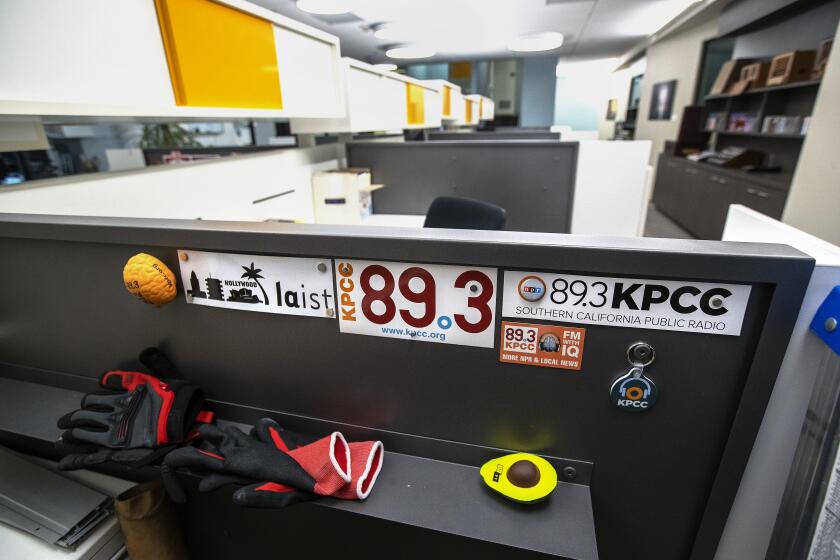A Most Wasteful Approach on Thrifts : S&L; Crisis: In banning lending activities of troubled institutions, one federal agency is only making the job of another much more difficult to resolve.
Last August, Congress authorized $50 billion to resolve the nation’s savings-and-loan crisis. Now it looks like cleaning up the thrift “mess” will cost an additional $25 billion to $100 billion, according to testimony at congressional hearings on the government’s handling of the problem.
The government and the special agencies that it created to resolve the thrift crisis look spectacularly inept right now. In large part the government’s policies themselves are enlarging, rather than shrinking the problem. By trying to restrict the allowable activities of thrifts, the government is severely constraining their income. In other words, the government is trying to shrink the doughnut by enlarging the hole.
How did this happen?
Congress gave the new Resolution Trust Corp. only one job: minimize the overall cost of resolving the thrift crisis. However, in its zeal to resolve the crisis of thrift regulation, Congress also abolished the Federal Home Loan Bank Board and replaced it with the Office of Thrift Supervision--an agency separate from the Resolution Trust Corp. The office regulates thrifts ranging from healthy to borderline bankrupt. Only when a thrift’s condition has deteriorated to insolvency does the Resolution Trust Corp. enter the picture.
And therein lies the problem. While one hand of government is charged with reducing the overall cost of the S&L; bailout, the other is sabotaging the value of the assets that ultimately must be sold.
In November, the Resolution Trust Corp. published its strategic plan for selling off the failed institutions and their foreclosed real estate. In particular, the case-resolution section mentions that special consideration should be given to protecting an institution’s customer base and avoiding the departure of key personnel, so as to minimize the loss in the final sale or merger of the thrift. These objectives clearly work toward maintaining whatever is left of the economic value of the retail franchise.
It should be the job of the Office of Thrift Supervision to maximize the economic value of any thrift that passes from its supervision to receivership by the Resolution Trust Corp. However, the current strategies of the supervising agency leave little of economic value for Resolution Trust to salvage.
If the Office of Thrift Supervision can attract capital to the institutions that still have viable retail branch networks, then fewer of Resolution Trust’s dollars will ultimately be spent. The recent announcements of complete lending bans on Mercury Savings of Huntington Beach, Imperial of San Diego, Valley Federal of Van Nuys and Santa Barbara Savings only serve to attack the problem in reverse. The Office of Thrift Supervision should be trying to weed out the inefficient branches of these troubled thrifts. To ban all new lending will only assure that all of the troubled retail facilities will be eliminated.
These thrifts are losing money because their assets earn less than their deposits and borrowing cost. In some cases, the amount of their liabilities exceeds their assets, giving them negative net worth. Attracting new capital, or finding partners to acquire or merge these institutions, will be difficult enough: Who will want thrift assets in real estate markets now overburdened with “see-through” high-rises and under-leased mini-malls? Who will want to invest in thrifts when the investment options of these institutions have been so severely curtailed by the recent savings and loan bailout legislation?
People interested in buying thrifts are as much interested in the retail customer base as they are in the dollars and cents on the balance sheet. For example, Royal Trust of Canada, in its acquisition of Pacific Federal in Costa Mesa, was attracted by the branch network and the fact that the lending operations of the institution were still functioning even after two years of direct government supervision and receivership.
The strength of any bank or thrift ultimately depends on people--the satisfaction of the customers, the efficiency of the managers and the effectiveness of the sales force. Certainly the troubled Southern California institutions should be restricted from making commercial real estate and large housing-development loans, as this lending requires expertise that institutions with impaired capital generally cannot attract. But shouldn’t they continue in residential lending so as to maintain the viability of their retail network? These thrifts cannot keep experienced lending officers and branch managers if they must follow the Office of Thrift Supervision’s directive to use all of the cash flow from assets to pay off liabilities.
If the government borrowing necessary to solve the thrift crisis is to stay below the currently authorized $50 billion, then the Office of Thrift Supervision must do a better job of maintaining the economic value of the retail customer bases of the thrifts that it supervises.
Just imagine how much Bloomingdale’s, now undergoing reorganization as part of the Campeau bankruptcy, would be worth if signs on the front doors proclaimed “returns only.”






